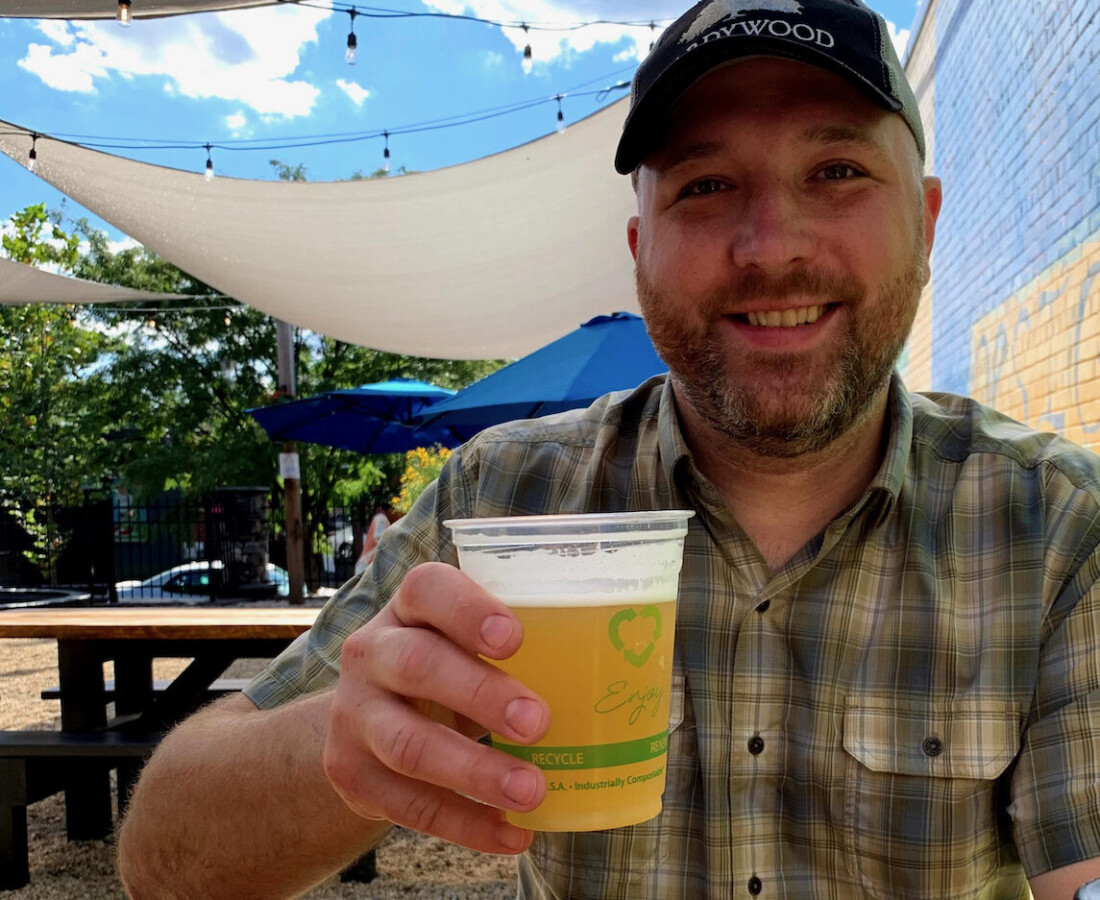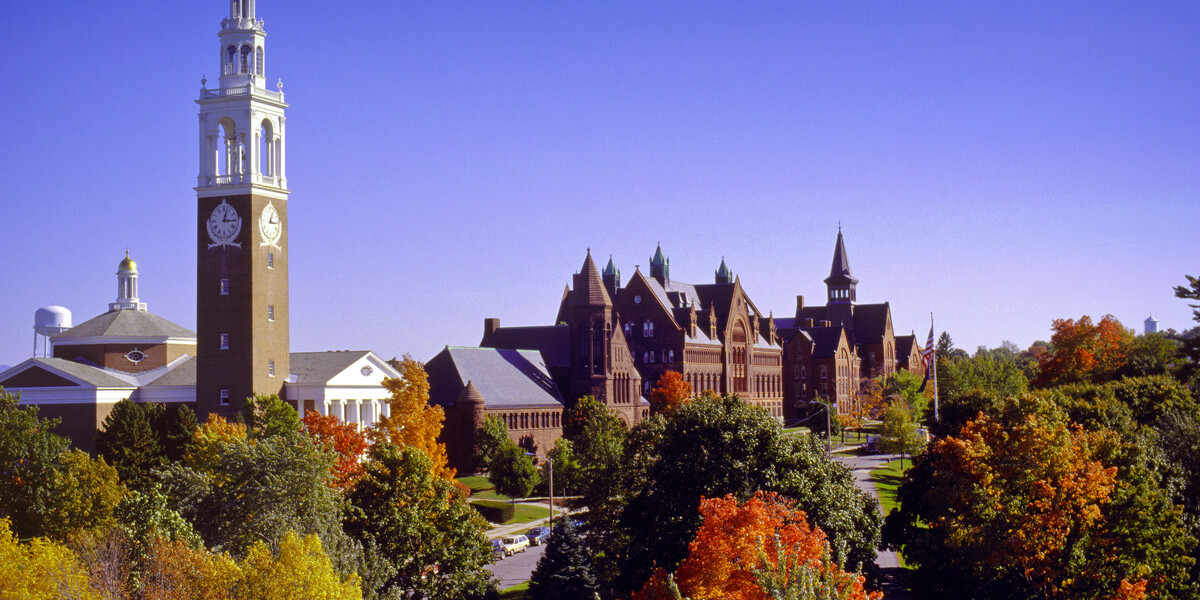By Jon Reynolds
Recent University of Vermont Business of Craft Beer School Alumni Joe Kasper has a solid background in the craft brewing industry on top of his recent UVM credentials. A former homebrewer, Joe got his start in the industry as a bartender in Milwaukee before moving into a retail bottle shop buyer, a regional sales manager for 3 Stars Brewing in Washington D.C., Sales and National Accounts Manager at Lexington Brewing & Distilling in Northern Virginia, and now the Off-Premise Sales Manager for Capital Eagle in Washington, DC.
We caught up with Joe recently to collect his insights about the future of the Craft Beer Industry and why UVM’s program helped him to hone his business skills.
JR: What is the best thing about the craft beer industry?
JK: It has to be the camaraderie and being part of a close-knit group. We regularly visit neighboring craft breweries, where we bring and share a 4-pack or 6-pack of our brewery’s best beers with the brewers. They, in turn, do the same for us. We also see everyone at local beer festivals, visit their booths, and share stories and insights together.
In this video Joe talks about why business courses are needed in the craft beer industry for breweries to succeed.
JR: What principles do you base a successful craft brewer on?
JK: Success is based on a long-term vision and constant innovation. Smaller brewers who don’t have a good vision or a pipeline of innovation usually fail.
JR: What are some of the major challenges that craft brewers face today?
JK: The #1 challenge is the fight for shelf space by the smaller brewers vs. the larger brewers. This is exacerbated by the continued proliferation of new beer styles, new entrants and new emerging categories (like Hard Seltzers and Canned Cocktails). During COVID, many taprooms were forced to pivot from outside their four walls to back inside and circle the wagons around their base, using curbside and online services to hold onto their customers.
JR: Has self-distribution been a savior for some brewers who can’t find a way to market with the larger National Brand distributors?
JK: In some markets (where legal), self-distribution has worked very well for some craft brewers, who got out early and landed the key retail accounts with their best-selling beers. As the growth of the number of brewers who have implemented self-distribution continued, there are many markets where the retailers no longer can handle the plethora of new self-distributing breweries. It takes too much of the buyer’s time and too many weekly checks have to be written, so many smaller retailers have pushed back on taking on new vendors.
JR: When do you see a recovery coming in the on-premise side of the business vs. 2019 (pre-COVID) levels?
JK: When I was a Lexington Brewing & Distilling, our projection was for the on-premise to slowly recover to 80-90% by the end of 2021, with a full recovery sometime in early 2022. Bars and restaurants need to recover their lost business and lost employees to assist in the recovery. Until then, many craft brewers are pivoting to off-premise (retail) and online sales to retain their customers.
JR: What was the ideal distributor for Lexington Brewing & Distilling, knowing the company is focused in two separate alcohol categories—beer and spirits?
JK: When I was at Lexington, we were a beer supplier first, with spirits being a profitable addition to the portfolio. We preferred beer distributors who were focused on and provided full service to their retailers in all facets of beer. Many of these are still learning the craft spirits side of the business, as they continue to add more craft spirit brands and more expertise to their respective sales staffs.
JR: Has the Brewery developed RTD Spirits or Canned Cocktails and entered that space?
JK: Lexington Brewing and Distilling is owned by Alltech, who also owns the Pearse-Lyons Brewery and Distillery in Dublin, Ireland. The Irish Flying Flamingo hard seltzer landed in Ireland with the Pearse Lyons Brewery & Distillery launching Ireland’s first Hard Seltzer. Only 90 calories and 5% ABV, Flying Flamingo Hard Seltzer is a natural lifestyle brand that comes in two refreshingly crisp flavors:- Pineapple Punch and Peach Fizz.
At Lexington Brewing & Distilling, we developed an FMB called Cantiki Cocktails in three flavors—Bahama Mama, Mai Tai and Strawberry Daiquiri. The FMB product was selected based on the excise taxes being lower than spirits taxes in the U.S., so Cantiki Cocktails were able to hit a more attractive price point to consumers.
JR: Is there room for more innovation by Lexington Brewing & Distilling in the Hard Seltzer segment?
JK: The Hard Seltzer category continues to grow, led by two well-entrenched brand innovators, White Claw and Truly. When I was at Lexington, we were still considering our ability to penetrate this fast-growing segment. The potential is certainly there, but we were talking about if we would be better off using our resources to build brands in other fringe segments or growth categories. There are no Ranch Waters yet in Virginia, but we were keeping an eye on that emerging segment as well.
JR: Is online marketing and curbside service supplanting the traditional 3-tier distribution model?
JK: When I was where, Lexington planned to continue to embrace the traditional 3-tier network and distribution channels. The company planned to compliment it with online marketing of their brands and packages, using the most up-to-date technologies, product information and photography to enhance our reach to customers who only shop online.
JR: Is there a “blurring of categories” with the launch of many large non-alcoholic (NA) players into the Hard Seltzer (alcohol) segment and the launch of RTD Coffees, Teas and Kombucha?
JK: I think the large NA players already own the NA space in their respective markets, much like Anheuser-Busch and Molson-Coors do in their respective markets. It is very difficult to move these large players out of the coolers or warm shelf, or draught space they already own. It will be difficult for new smaller players to break in. The continued proliferation of hard seltzers by large NA Players could reduce the amount shelf and cooler space allocated to traditional craft beers, which hurts the entire Craft Beer Industry.
JR: Do you see cans as the package of choice for craft beer consumers? What emerging trends are prevalent within cans that your former Brewery is making adjustments for?
JK: We all see that can purchases of craft beers are surging. Lexington has been in bottles for many years now, but when I was there they were considering if they will need to enter the canned craft beer segment at some future point. 4-pack 16 oz cans are the #1 selling SKU in what were my markets for Craft Beers. There is upside for a 12-pack of 16 oz cans, as there were very few of these in my Virginia markets. 8 oz cans are showing up in some markets for higher alcohol beers and for brewers who want to stand out.
JR: What is the vision for the Craft Brewing Industry you see?
JK: Craft Brewers that survive the continued onslaught of more breweries being built in their back yards, will do it based on the quality of their brews. The fallout of the craft brewing industry will be caused by inferior quality of their brews. A state’s success in craft brewing can be enhanced with solid work from the state’s Craft brewers Guild.
Acquisitions will continue in our industry, albeit not by the large Mega Brewers like Anheuser-Busch or Molson-Coors, but by the marriage of brewers who share the same vision, or who need capacity on the East or West Coast and can gain a foothold by sharing resources, without the expense of building a new brewery or hiring many new sales professionals. Some conglomerates of Craft Brewing are beginning to spin off breweries they bought during the years when they made a lot of deals, which turned out not to be good strategic fits—one example is CANarchy, which recently spun off both Deep Elum in Texas and Three Weavers in California back to their original owners.
As more and more craft brewers enter this space, Joe recommends that all brewers who wish to know more about the industry they participate in, innovation and growth strategies, finance and operations tips that lead to profit, should enroll in UVM’s Business of Craft Beer Professional Certificate. Joe said he uses the skills he gained in the course, every day. And that the BOCB program provides insights into the Craft Business from instructors who have broad experiences to share in craft beer.
Joe completed the Business of Craft Beer (BOCB) Social Media and Marketing Class in Summer, 2020, then Business Operations in Fall, 2020, finishing up with the Sales and Distribution Class in Spring, 2021, completing the requirements for UVM’s Business of Craft Beer Professional Certificate.
In this video Joe explains why he choose UVM’s Business of Craft Beer Professional Certificate Program to advance in his career.
Learn about UVM’s Business of Craft Beer Professional Certificate Program

Jon Reynolds is the founder of Brewplan, a strategic marketing advisor to craft brewers, craft distilleries, boutique wineries, and a Certified Instructor in the UVM Business of Craft Beer Professional Certificate Program. He writes about business trends, beer consumers, distributor issues, legislation that affects craft brewers, marketing tools, and strategic planning to improve brewery profits.
Views and opinions expressed herein are those of the author who has spent more than 40+ years in the beer, wine and spirits industry and are provided for informational purposes only. The information set forth reflects the author’s opinion of current trends in the industry and should be researched further to make your own business conclusions.




